According to Open Doors, international students are returning to US colleges and universities. That’s the good news. However, competition for international students is increasing among US institutions, and the US is losing the battle with foreign colleges and universities.
According to data from UNESCO’s Institute for Statistics, the US remains the top destination country for inbound international students. However, the US share of inbound international students (among the top five destination countries) fell nine percentage points from 2016 to 2020 as more countries actively courted these students and US visas became harder to get.
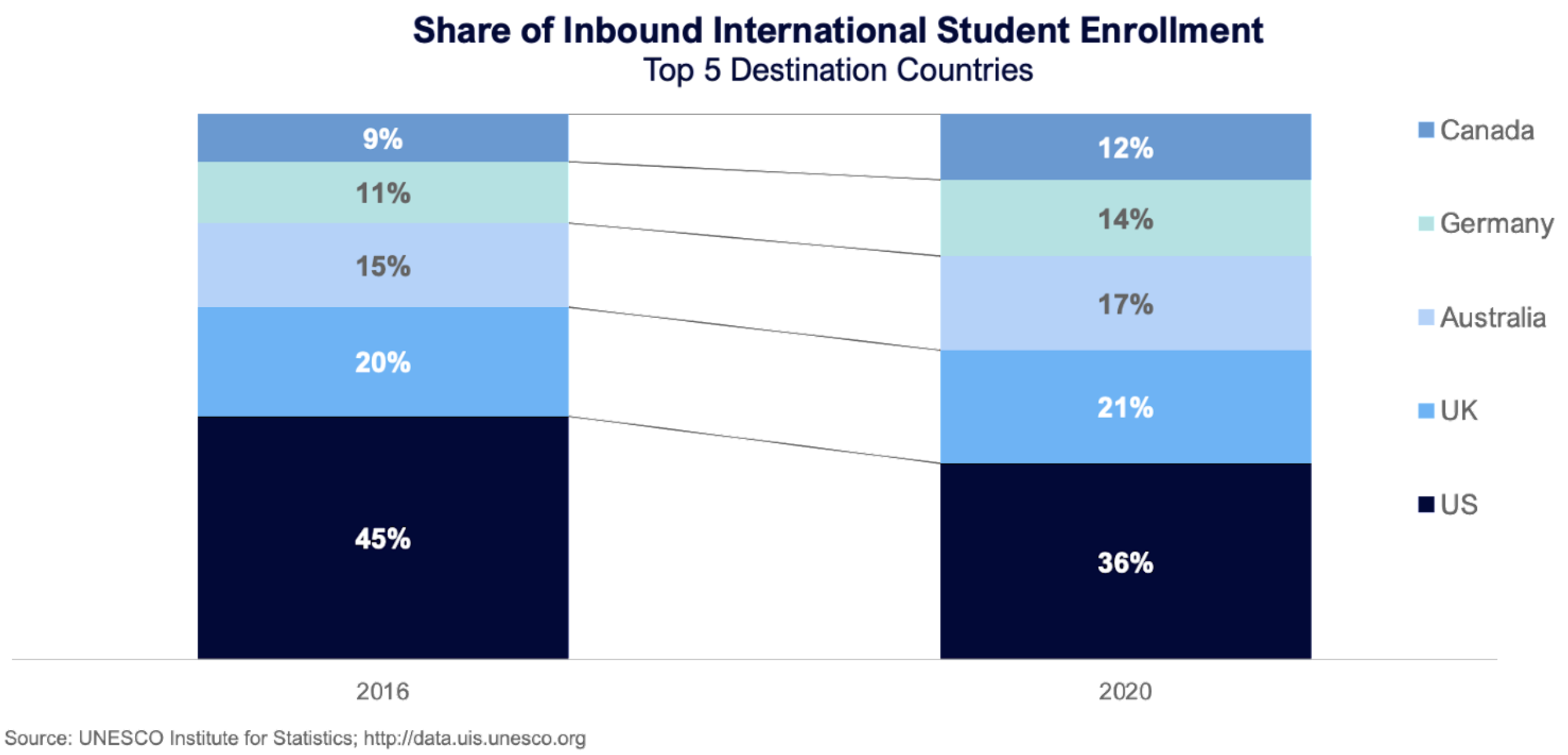
How can you win back your fair share of foreign students?
Offer Programs That International Students Want
A good first step is to understand what programs international students want to take. Gray’s analysis of 2021 IPEDS completions data reveals a few programs that attract a lot of international students. Computer Science and Business programs each graduated over 25,000 international students in 2021. Business Analytics programs had over 15,000 international graduates.
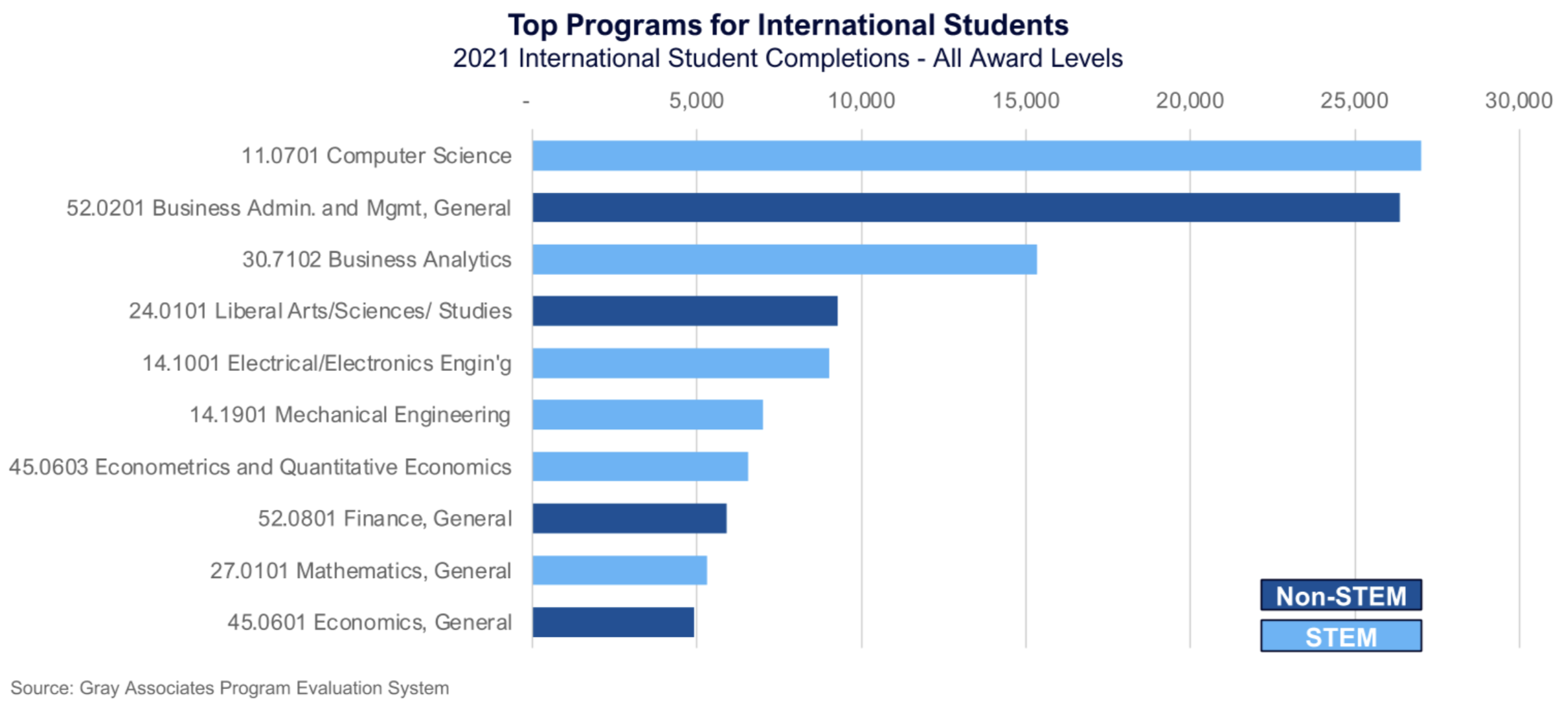
To STEM or not to STEM?
Many of these programs are STEM-designated, which appeals to foreign students (STEM students can stay in the US for longer after graduation). In fact, a quick comparison of two sets of similar programs, one of which is STEM-designated and the other not, shows how important the STEM designation may be to international students.
The first chart (below) shows completions of Economics (non-STEM) programs versus Econometrics and Quantitative Economics (STEM) programs from 2016 to 2021. Completions of the STEM-designated degree grew 71% annually over this time, whereas completions of non-STEM Economics programs fell 7% annually. In 2021, 36% of Econometrics and Quantitative Economics graduates were foreign students, compared to 17% for Economics programs.
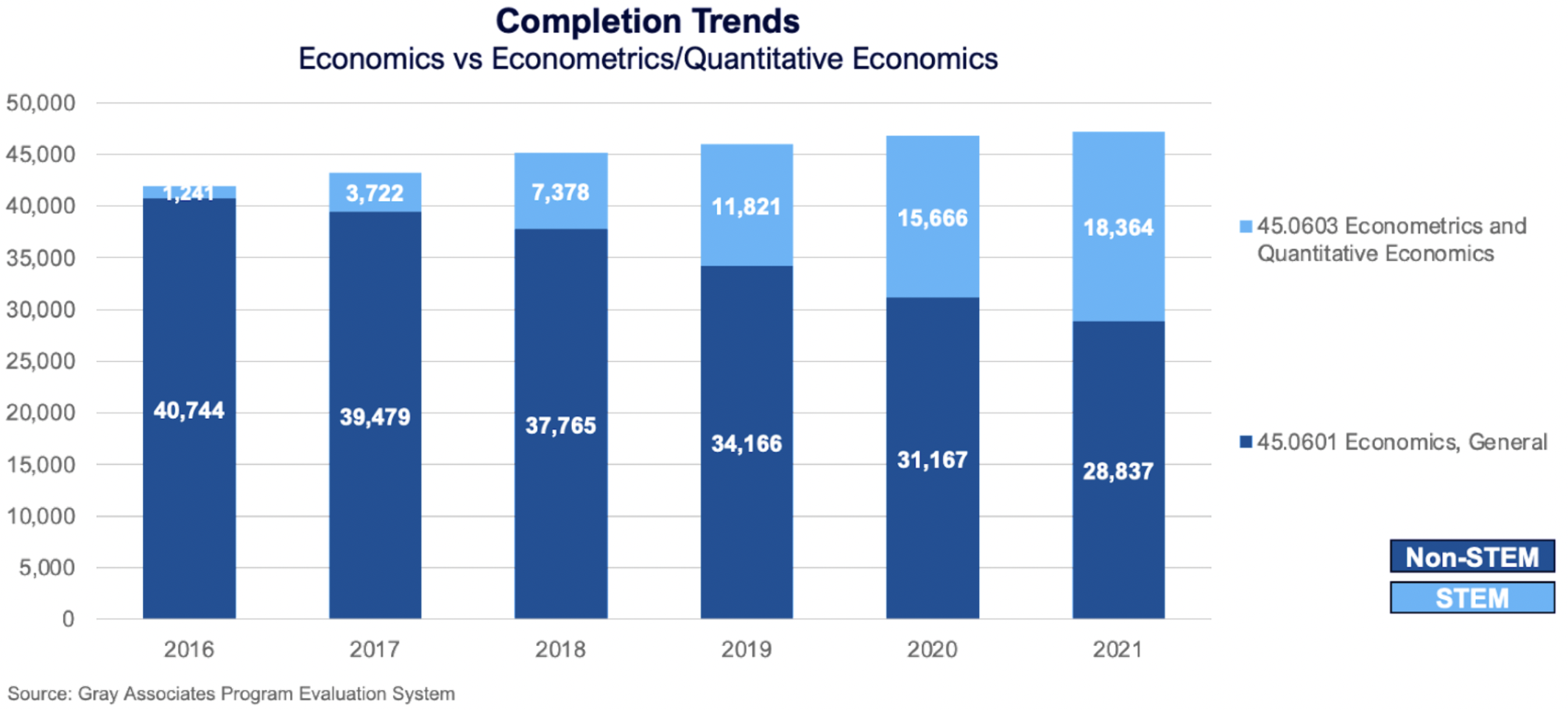
Comparing another set of similar degree programs – Architecture (non-STEM) and Architectural & Building Sciences (STEM), we see a similar trend, this time even more pronounced. Completions of the STEM-designated Architectural & Building Sciences grew 52% annually from 2016 to 2021, whereas completions of Architecture programs declined 14% annually. In 2021, 30% of Architectural & Building Sciences graduates were foreign students, compared to 10% for Architecture programs.
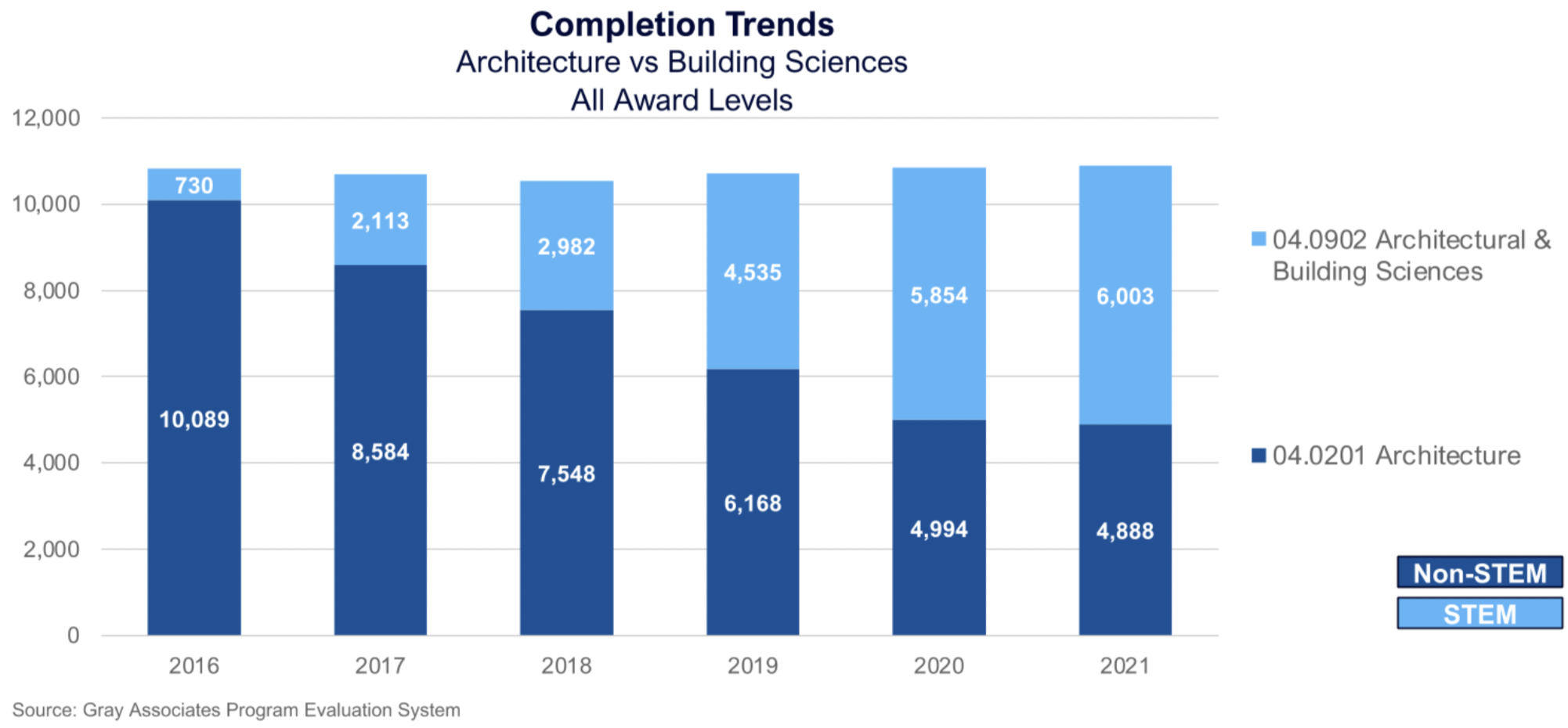
Target Prospective Student Recruiting
In addition to understanding program demand, it is important to focus recruiting efforts in high-demand countries and cities. Gray works with StudyPortals to compile data on international student demand for academic programs by student country and city of origin. Using this data, institutions can focus on marketing and recruiting resources in high-opportunity areas.
Building on one of the program examples above, the heat map below shows international student page views (January through March 2023) for Econometrics and Quantitative Economics programs by country of origin. Nigeria, Ghana, and India in the dark red generated the most page views for this program.
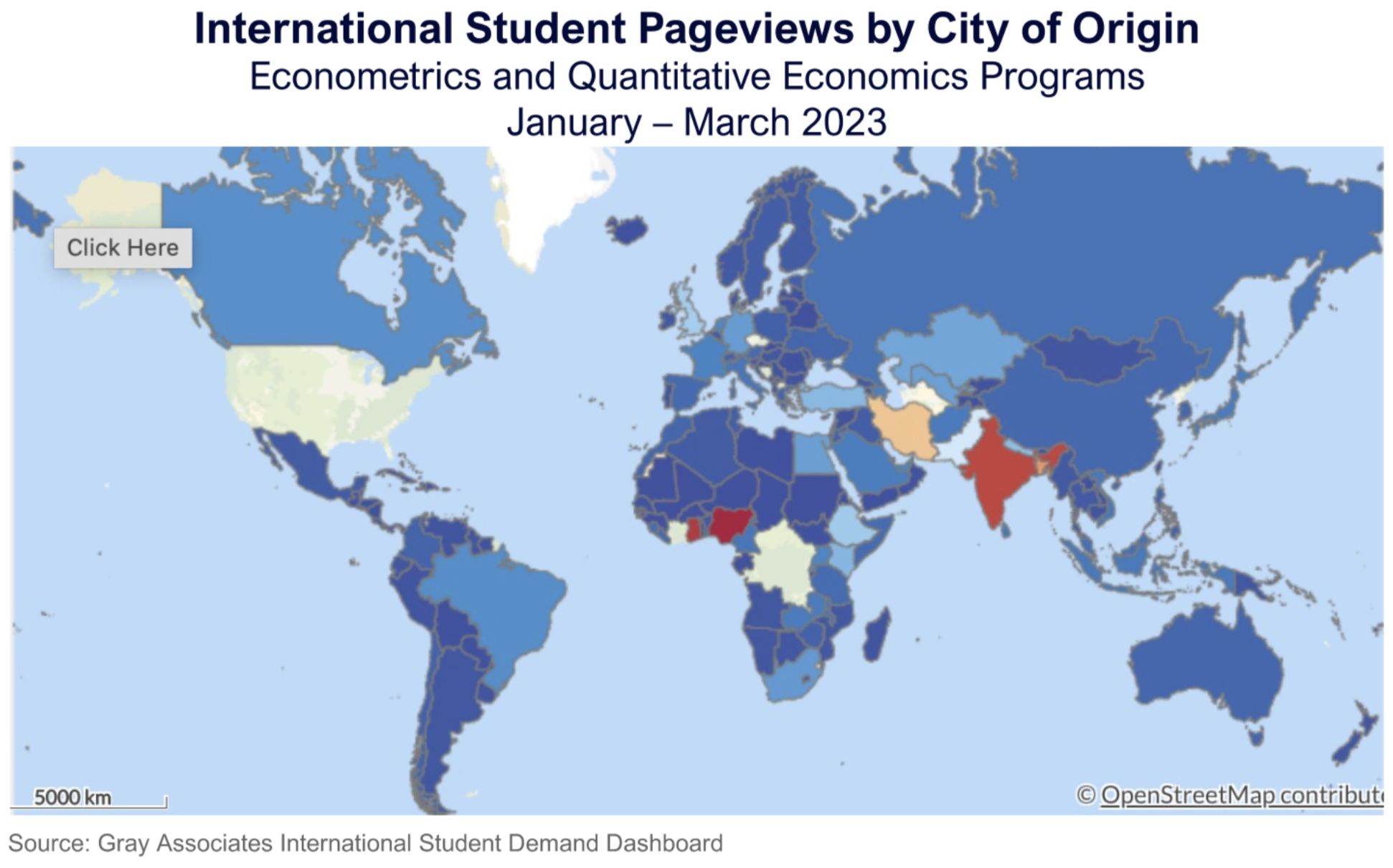
Digging deeper, we can see which cities and regions in each country are generating the most demand (see chart below).
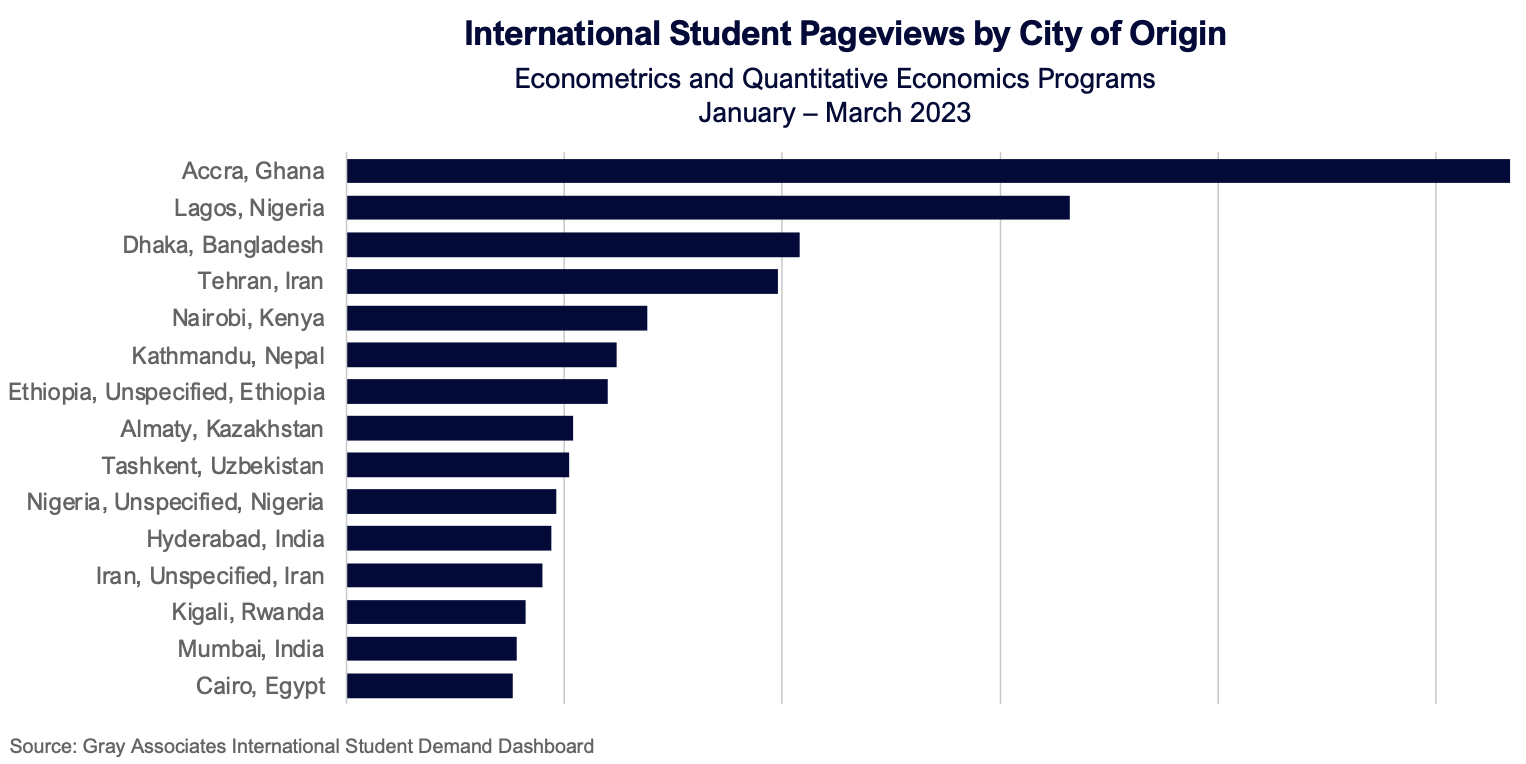
Using data on program and geographic demand, institutions looking abroad for prospective students can better focus marketing and recruiting efforts to maximize returns and bring more international students to campus.




